This blog post is about what a software company with a conscience has managed to accomplish in the context of sustainability.
Sustainability is not what comes to mind immediately when you think of software companies. The cynic that I (Narasimhan, not Raja who is also the co-author for this blog post) am, I constantly tell that the only green that the software companies in India know or care about is the greenback.
But as usual, I am prone to making sweeping generalizations. Surely there are some software companies with a green conscience?
You bet!
Net Zero by Narsi
Insights and interactions on climate action by Narasimhan Santhanam, Director - EAI
View full playlistAnd you appear to have bet right. The following post is about the remarkable work in sustainability that a software company located at Chennai has done. First, the highlights.
Highlights
|
Solverminds creates ERP solutions for the shipping industry.
EAI became acquainted with the company, not through any industry event, but through our children’s workshops . The son of Solverminds MD (Anthony Damian) was at the workshop, and during the chance meeting with Anthony who had come to drop his son, we heard of the many interesting initiatives his had implemented to make their office more sustainable. We were naturally keen to learn more, and had an opportunity to tour their facility recently.
Before giving us the tour the founders of Solverminds, Anthony Damian and Mohit Oberoi, discussed their motivation and approach towards making their office sustainable, explaining that they chose to emphasise being environment friendly not only to be socially responsible, but also because it made sound business sense to do so: the savings in both power and water have a significant impact on the bottom-line performance of an enterprise.
What’s remarkable about what Solverminds has done is the fact that they have carried out these activities not with the objective of getting a certification, but more out sense of responsibility. Way to go, mates!
Energy
IT companies consume a great deal of energy in both air-conditioning and lighting. Solverminds worked with its architects to design an office that minimised energy consumption without affecting the comfort or productivity of more than 250 employees.
Lighting
Atrium – The building features an atrium design that allows a great deal of natural light into the interiors of the building through a water-sealing canopy in the roof.
Large windows – This was one constant feature throughout the entire building – large windows that let in lots of natural sunlight. Very large windows are also utilised to allow as much natural lighting as possible, making energy consumption on artificial lighting negligible. Even the toilets feature extensive natural lighting and ventilation, obviating the need for exhaust fans. For those who wonder whether large windows would also let lots of heat in, the windows feature double glazing to allow light but not heat into the building.
Going Light on Heavy Duty Items – Less of Air-Conditioning, Elevators and Ventilators
Air conditioning – Air-conditioning accounts for 2/3 of the energy consumption of the building. To minimise this consumption, the non air-conditioned service areas of the building (such as stairways and toilets), are located by the western wall of the building which receives the most heat from the sun. Air-conditioners are also turned off for 1 hour during the day at lunch time, and after 6 in the evening.
Elevators – In addition, the 3-storeyed building does not have an elevator; all employees are required to use the stairs. What was even more inspiring was that among its employees, those who were physically disadvantaged were more keen to use the stairs than the rest.
Ventilators – The washrooms included enough of natural ventilation; as a result there are no energy-consuming, automated ventilators.
With these measures, Solverminds limits their electrical consumption to about 32,000 units per month. One area that is still an energy sucker is their data center, which requires significant cooling via AC.
Fuel Consumption
Buses – IT companies located in IT parks usually have a fleet of vehicles for people transport, and Solverminds is no exception. Most people coming to the company use one of the three company buses. Interestingly, many of the employees have shifted to locations much closer to Siruseri, so the CO2 footprint from their individual transport is anyway relatively small. This is made even smaller as a result of their using the bus.
Training for fuel efficiency – While the use of buses by IT companies might not sound anything great, what impressed us was that Solverminds had taken an extra step to conserve transport fuel. They have utilized the services of expert drivers to train their bus and car drivers in fuel-efficient driving.
Environment
Everyone going green
Solverminds encourage their employees to promote greenery in and around their facility. Project leaders are each given a tree on campus to take care of. The company is also experimenting with turning some of the building’s columns into green walls.
Waste
3-bin waste segregation
The company has instituted a 3-bin system (food, paper, plastic) to segregate waste before it is handed over for disposal.
Catering service
Noticing that that significant amounts of plastic waste were generated due to employees individually ordering food from various providers, the company has now appointed a caterer to supply food in the office canteen to eliminate this waste. While companies having food catered in canteens is not anything new either, we felt what was new was the environmental motivation for the same.
Check out: Sustainability Edge – EAI Consulting to assist corporates design, evaluate and align sustainability strategies
Water
Waterless urinals
I have not seen waterless urinals being commonplace anywhere in the world, leave alone India. Yes, lots of of folks talk about it, but most of them are shy of using it owing to the concern that it would not work out at al.
It seems to have worked out pretty well for Solverminds.
All the toilets in the building feature waterless urinals. In addition to saving 2/3 of water consumption, the company also reduces the amount of chemicals used in cleaning, which makes it easier to treat the wastewater in the sewage treatment plant.
We checked whether not using water creates any mal-odours and the answer was negative. They need to change the cartridge every three months or so, and that appears to be pretty much it. For those keen on understanding how waterless urinals work, here is a link that could be of help!
Sewage treatment
Ozone waste water treatment – Solverminds uses an ozone sewage treatment plant to treat its wastewater. The company finds the ozone treatment plant to be more effective than other technologies it has previously used. No wastewater is released from the facility; all the treated water is used internally, such as for watering the garden. Some info on how the ozone treatment works.
Due to using waterless urinals the amount of wastewater generated is very low. Despite having 260 employees, the company has not required sludge cleaning in more than 3 years of operating the sewage treatment plant.
Rainwater harvesting
The company has also implemented rainwater harvesting to recharge groundwater levels.
The company also uses a reverse osmosis plant for drinking water.
Future Plans
Solverminds has achieved significant cost savings through these solutions. The company plans to continue integrating sustainable solutions that also provide favourable economics, such as installing a solar PV plant on their rooftop. As in the case of their other efforts, they are not looking at having solar power just for the sake of going green, but they also see a good business case in this. The presence of solar on their rooftop provides them with long term energy security against power cuts, which despite their being in a special economic zone, is persistent!
Summary
Overall, it was a most satisfying visit.
While we are sure Solverminds would continue doing more in its sustainability efforts, the following is the summary of what they have already achieved
- Significant reduction of power use through intelligent use of natural lighting and ventilation
- Optimal use of water through basic efforts such as rainwater harvesting and more pioneering efforts such as waterless urinals
- Waste management through efficient segregation as well as smart ideas such as catering food in bulk
- Making sure that sustainability is not just a top management effort, but involving many of their employees in this process
- Most important, approaching corporate sustainability the way it should be approached – not as a knee jerk reaction to satisfy a mandate but a conscientious strategy to be responsible to the environment around us.
Check out: Sustainability Edge – EAI Consulting to assist corporates design, evaluate and align sustainability strategies
Some really inspiring pictures from our visit
Anthony (left) & Mohit – Directors
The Atrium – a lovely looking place basking in light from the sunlight above
The Atrium top as viewed from the rooftop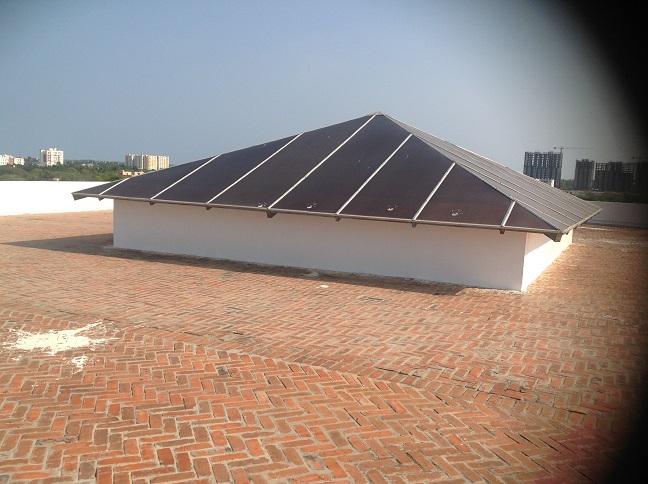
Large windows ensure there is no need for lights – the cafetaria
Large windows once again make it unnecessary to switch on lights even in workspaces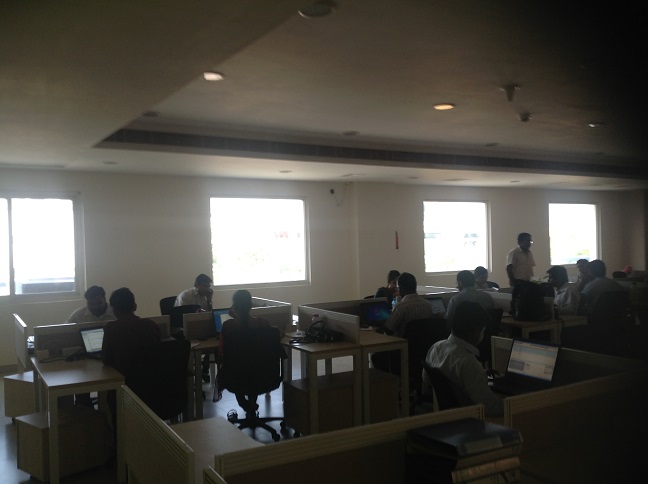
Natural ventilation in the toilets mean that much less energy required to operate the electric ventilator
Extra light and ventilation from nature in the loo
Do you see any lights on? And what indeed is the need with so much sunlight!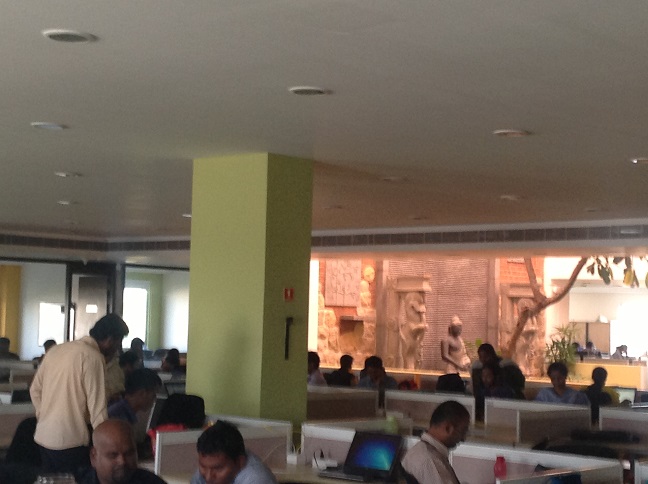
You see laptops all around and almost no desktops – laptops consume much less energy than desktops!
More natural ventilation in the loo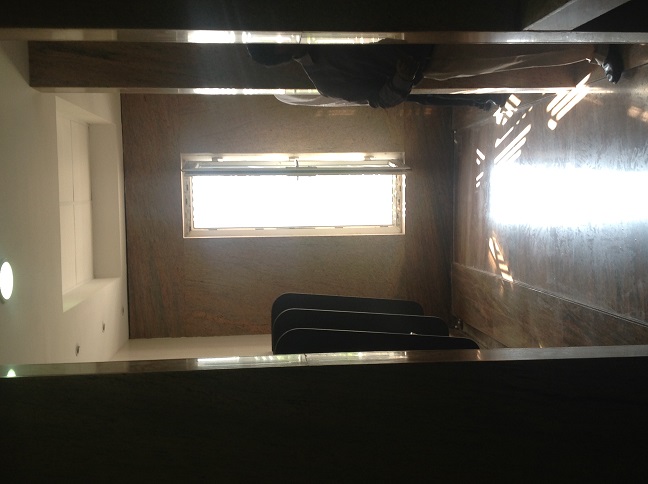
Waterless urinals, works through microbial and biological action 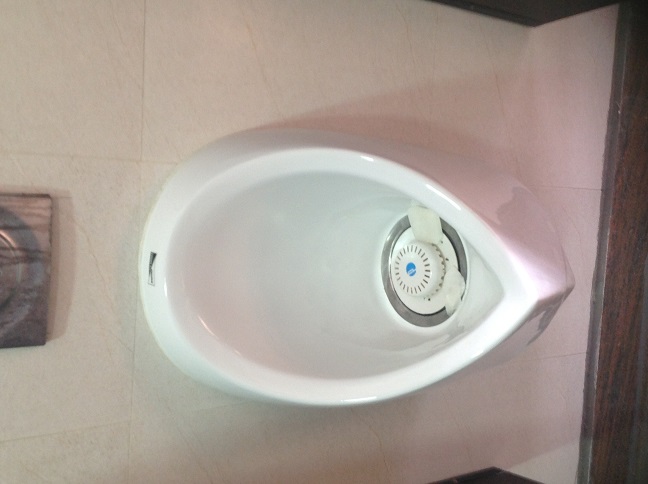
Harvesting rainwater from the rooftop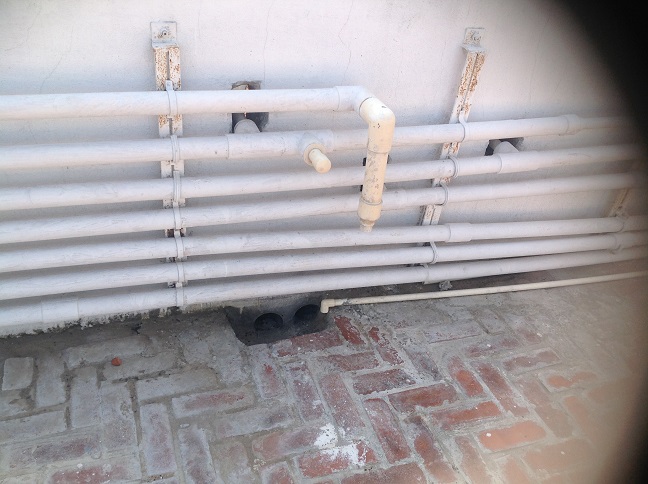
Trying their hand at “vertical gardening”
Trees planted and maintained by project leaders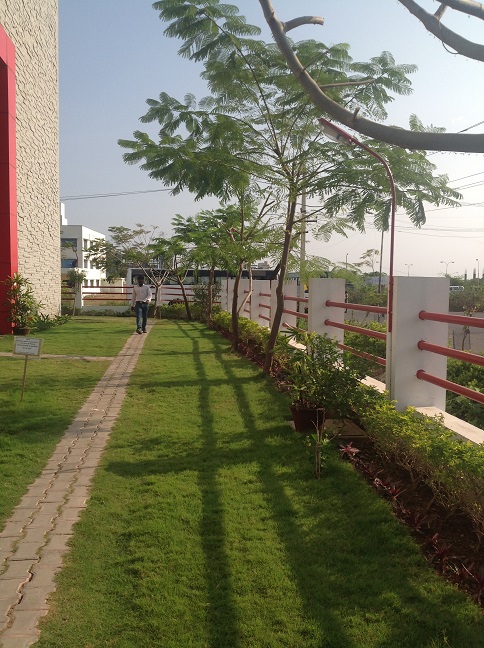
See also: an interesting emerging cleantech segment – Building Energy Analytics; also, Suncyclopedia, the Solar Encyclopedia
Interesting web resources
- C2V – CO2 to Value – a comprehensive web resource providing insights on opportunities in converting CO2 into a range of useful products – fuels, chemicals, food & materials
- All about CO2 – CO2 Q&A – a unique resource providing answers to 100+ questions on the most talked about gas today.





 Our specialty focus areas include
Our specialty focus areas include

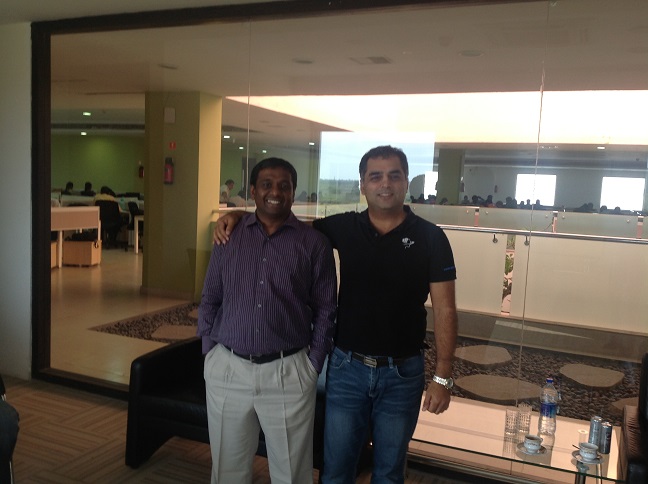
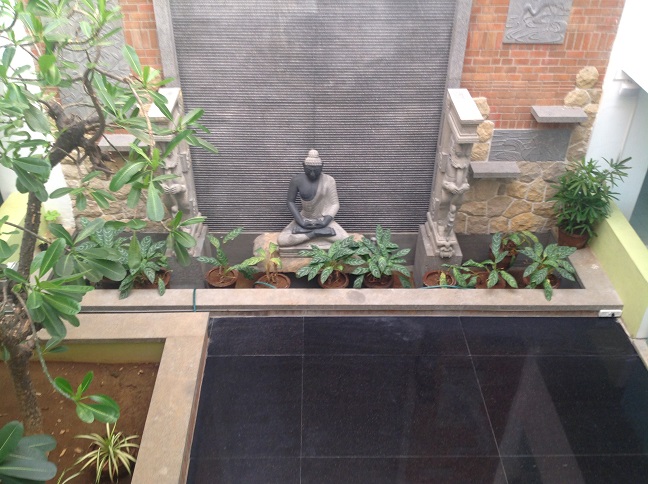
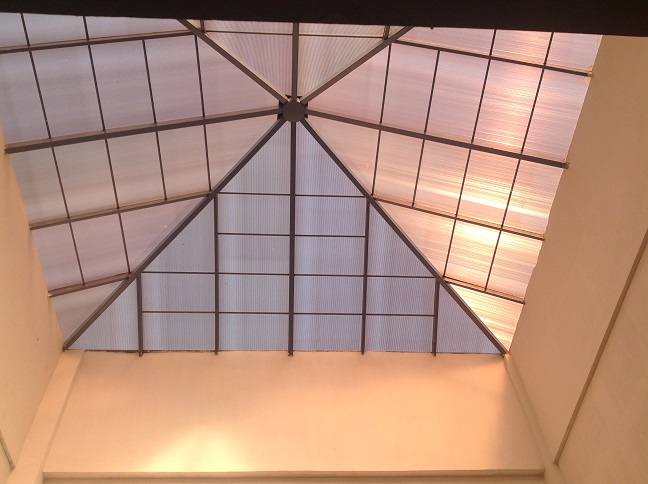
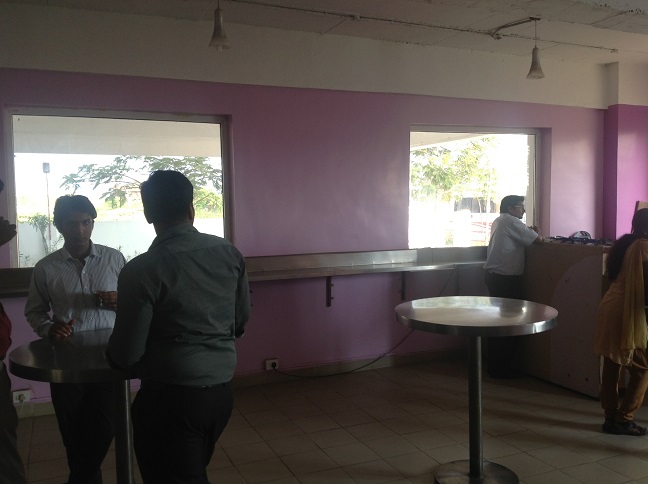
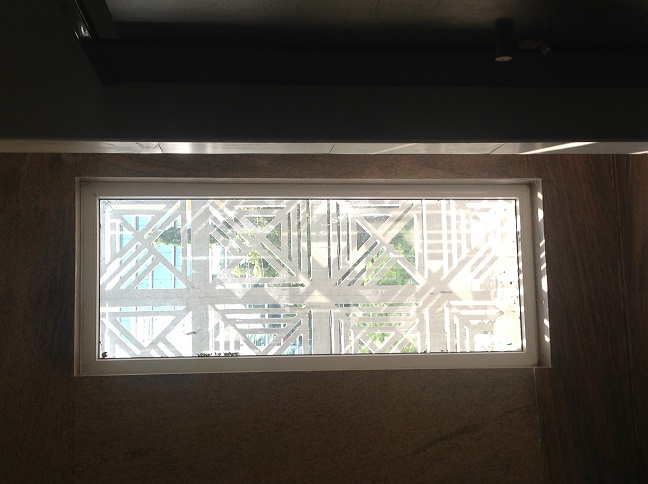
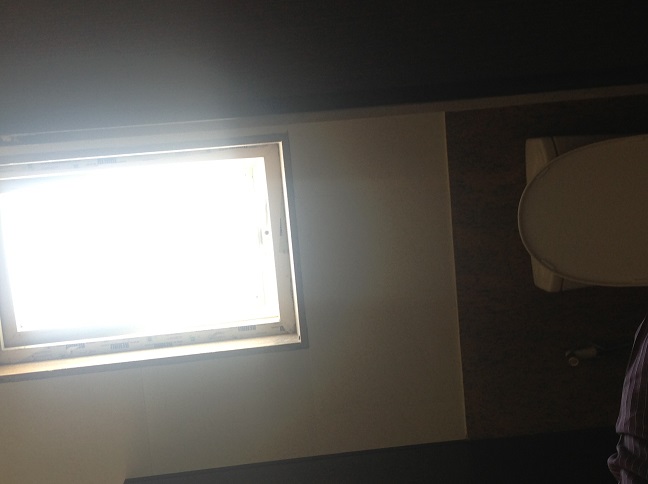
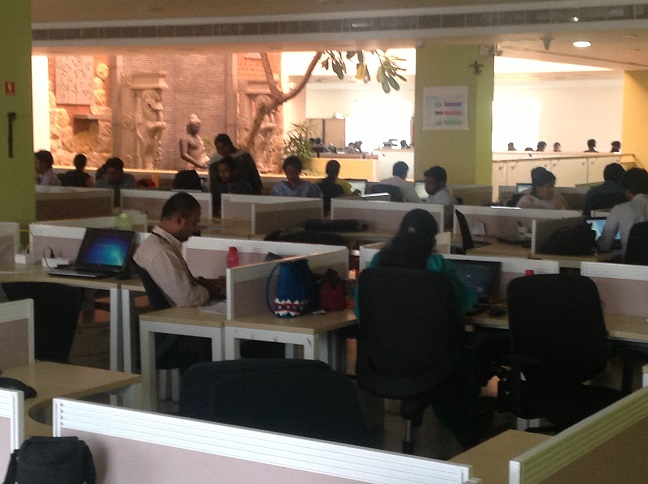
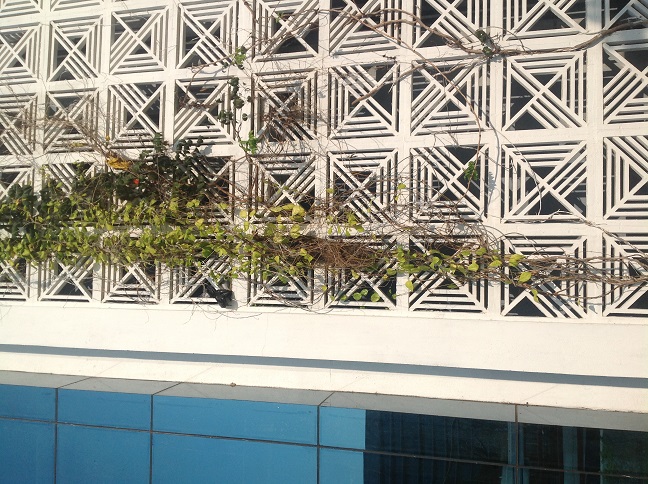
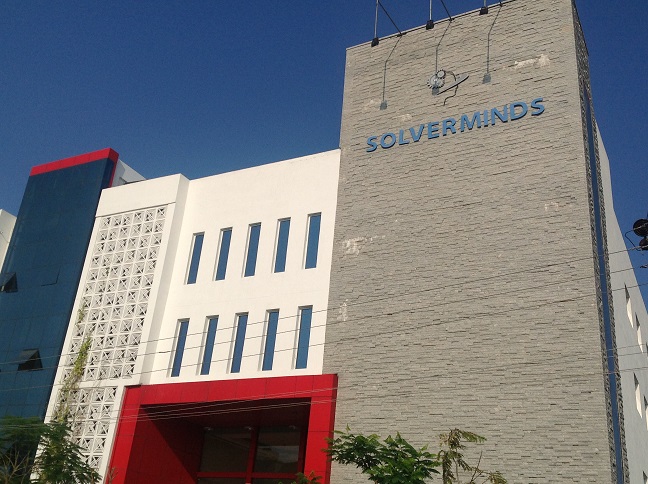
 ZEV India Partnership – Driving Truck Electrification through Collaboration
ZEV India Partnership – Driving Truck Electrification through Collaboration

